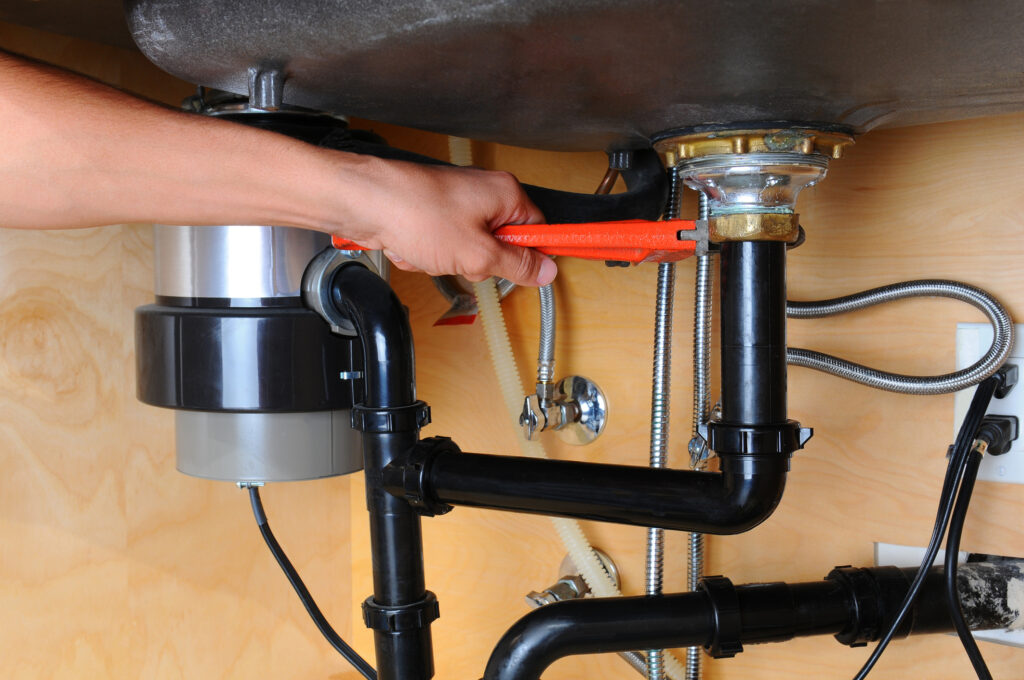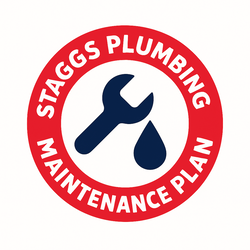What’s The Life Span Of My Home’s Plumbing?
Nothing lasts forever, even your home’s plumbing system. Fortunately, most plumbing elements work well for decades. But when different parts reach the end of their useful life span, pipes might start to leak, and you can find yourself needing to replace one or more components.

10 Tell-Tale Signs Plumbing Elements Need Replacement
Most homeowners don’t give their plumbing system much thought until — that is, something goes wrong. Catching plumbing issues early, though, can help you prolong your system’s life and avoid more expensive repairs and replacements.
Any one of these signs is a good reason to call in the professionals at Staggs Plumbing.
- Reduced water pressure, which can indicate a clog, burst pipe, or pinhole pipe leak.
- Water damage signs like dark patches on ceiling and walls, unusual mold growth, or structural weakness.
- Frequent clogs that suggest a problem further along in your pipes.
- Water discoloration can be the sign of a water heater problem or rusty pipes.
- Slow-moving drains are typically a symptom of constant clogging but can also signal sewer drain line damage or tree root intrusion.
- Unusual odors coming from your drains often indicate something’s wrong with the sewer line.
- Knocking sounds in your home’s walls could mean a pipe has come loose from its fastening, but it could also be due to irregularities in water pressure.
- Lack of hot water is, of course, a sign something’s wrong with your water heater.
- General performance issues like phantom flushing or faucet drips can seem small but often get bigger over time if left unaddressed.
- Older and aging piping systems can actually be dangerous. If your home’s pipes are 50 years old or older, they could contain lead and vermiculite, which, if disturbed, can release asbestos fibers into the air.
Typical Life Span of Various Plumbing Components
Many factors, including material, installation, environmental conditions, and usage, can affect the life span of plumbing components. Here’s how long different equipment and parts tend to last.
- Piping: Most homes have galvanized steel, copper, plastic, or a combination of all three types of pipes. Galvanized piping tends to last anywhere from 40 to 50 years, while copper pipes have been known to survive for 70 years or more. Plastic or PVC piping has a rough life expectancy of 50 to 75 years.
- Waste pipes: Plastic waste pipes have a 50-80 year life span; cast iron versions tend to age out at 60 years. Concrete/clay waste pipes can last a century!
- Water heaters: have an average life span of 10 to 12 years, with tankless versions topping out at 20 years.
- Toilets: While a toilet’s porcelain exterior can easily last 100 years, the internal components like the flapper, lever, and valve often need replacing every few years.
- Faucets: The cheaper the fixture, the shorter its life span. Quality fixtures typically last up to 20 years, but many survive much longer.
- Sump pumps and well pumps: Both last an average of 10 years, though well pumps often make it to 15 years.
Risks of Not Replacing Faulty Plumbing Elements
It’s never a good idea to delay plumbing repairs or replacements. Broken or faulty plumbing components can lead to significant water damage in your home, meaning what could have been a minor job suddenly turns into a major nightmare. Staggs Plumbing provides a range of plumbing services, including bathroom plumbing repairs and kitchen plumbing repairs and installations. We also offer 24-hour emergency plumbing services throughout the entire Dallas/Fort Worth area.


